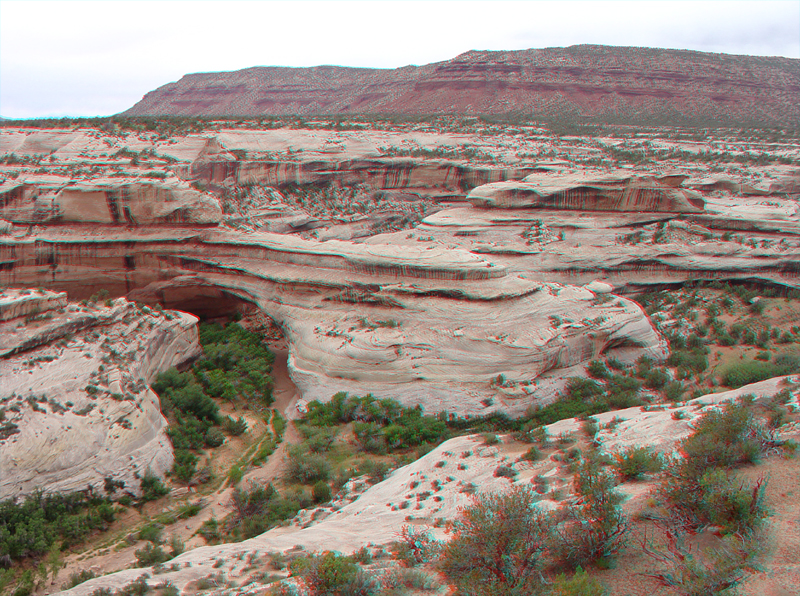| This view of Kachina Bridge shows the ancient stream channel that was left high and dry after Armstrong Creek breached the promontory that now forms the bridge. This view also shows the slickrock upland surface that defines the top of the Cedar Mesa Sandstone. The steep, red slopes and dark cliffs in the distance consist of younger Permian and Triassic formations. The bright red slope between the Cedar Mesa and the first dark cliff face is theLower Permian Organ Rock Formation (about 300 feet or 90 m thick). The lower, dark colored cliffs with narrow intervening slopes are the Moenkopi Formation. The Moenkopi consists of gray limestone and reddish sandstone, siltstone, and shale. Tracks of ancient reptiles and amphibians are preserved along with ripple marks and mud cracks in some layers of the Moenkopi. These trace fossils suggest that the sediments were deposited in shallow bays, mudflat's, marshes and the flood plains of broad, slow-moving streams in the Early to MiddleTriassic Period. The top part of the Mesa consists of sandstone and shale of the Chinle Formation. Some layers of the Chinle Formation yields fossil wood, even fossil logs like those preserved in Petrified Forest National Park in Arizona. This fossil wood in the Chinle Formation suggests that during periods of the Late Triassic Period, extensive lowland forested coastal swamps and river flood plains covered much of what is now the Colorado Plateau. In Permian to early Triassic time, low mountains or hills existed in the Western Colorado Region (geologists call these Ancestral Rocky Mountains and the Uncompahgre Uplift). These and other upland areas shed sediments into river systems that flow across the Colorado Plateau region into the Pacific Ocean basin (Huntoon and others, 2000; NPS, 2008). Some of these rivers may have flowed from as far away as the Appalachian Mountains or the Canadian Shield regions of North America. |

